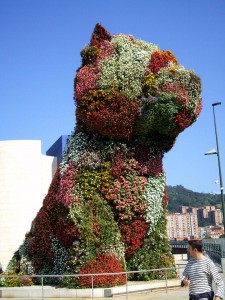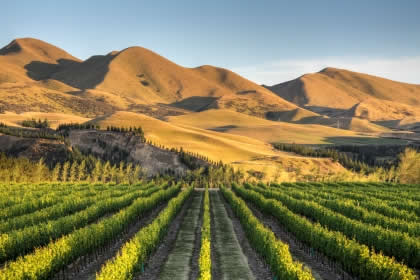When planning a trip to Spain, many travelers focus on well-known cities like Madrid, Seville or Barcelona. While I have thoroughly enjoyed my travels in each of those places, when it comes to visiting Spain, my heart belongs to the Basque region. The Basque region of Spain (France has one, too) is located on the northwestern coast along the Bay of Biscay. Here are some reasons why you should check it out.
Less Touristy
While it’s true that some places in the Basque region attract crowds of tourists (like the surf town of Mundaca during competition season), the region as a whole is much less crowded than some of the more popular tourist attractions in Spain. As a result it is easier to find affordable and eco-friendly accommodations and integrate into the daily lifestyle of this relaxed region.
Relaxed Pace
The Basque region is made up mostly of smaller cities and towns that offer a relaxed pace to residents and tourists alike. The beach cities of Gorliz and Plentzia are where the Spanish go on vacation. The major attraction in both these towns is, of course, the beach. You can also venture into Plentzia’s old quarter, an area filled with fascinating architecture that reflects the history of the region. I recommend stopping by the Muxika-Butron tower and the old church.
A fishing town founded in 1239, Bermeo is also a wonderful place to spend an afternoon doing some light sightseeing. The town’s attractions include the impressive arch of San Juan (dating back to the 14th century) and the nearby historic quarter, full of more medieval structures, traditional fishermen’s houses, quaint town squares, and the old port. This isn’t an “official attraction,” but I’ll let you in on a little secret– just around the corner from the port there is a mass of large rocks that are perfect for sunbathing and jumping off of to take a dip in the water.
Excellent Cuisine
If you enjoy fresh seafood, then you’ll be in heaven in the Basque region. And since most of the best seafood restaurants cater to locals, prices are not as high as one might expect. If you get to Bermeo, I recommend stopping at Jokin, a traditional Basque restaurant with a great view of the port. I had some amazing squid ink pasta there one sunny afternoon.
Some of my best culinary memories of the Basque region are of Bilbao (the region’s capital and largest city). Head to the Casco Viejo (older part of the city) around 4pm when the bars put out their pintxos. Pintxos are light appetizers, typically served on small wedges of fresh bread. One of my favorites was the traditional tortilla, made with eggs, potatoes, and plenty of oil. Most of the smaller bars we visited in Bilbao offered pintxos on the honor system. We helped ourselves to the various selections set out on the bar and then paid 1 euro per pintxo before we left. Of course, you’ll need to wash down these savory treats with something cold. Regional specialty drinks include calimotxos (cola mixed with red wine) and picas (light beer mixed with lemonade).
If you have a sweet tooth, be sure to stop by Chocolates de Mendaro in Bilbao for some rich chocolates, pastries and coffee. This local company, which has been in business since 1850, serves both traditional and cutting-edge sweets (all made with cocoa).
Rich Culture
The entire Basque region has a rich history and culture. However, when I was there I was most focused on the arts scene. One of the best known museums in Europe is the Bilbao Guggenheim. The museum opened in 1997 and to date, the museum has welcomed over 12 million visitors. You can’t miss the building itself, which was designed by world-renown architect Frank Gehry. The architecture is based on the seaside culture of Bilbao, with undulating metal “waves” that reflect the light and lead visitors toward the main entrance. The museum features work by a variety of 20th/21st century artists (Yves Klein, Willem de Kooning, Robert Motherwell, Robert Rauschenberg, Andy Warhol, to name a few).
Once you get out into some of the Basque region’s smaller towns, you’ll find that most of the history centers on maritime culture and the Spanish Civil War, which greatly affected the region– also quite fascinating.

